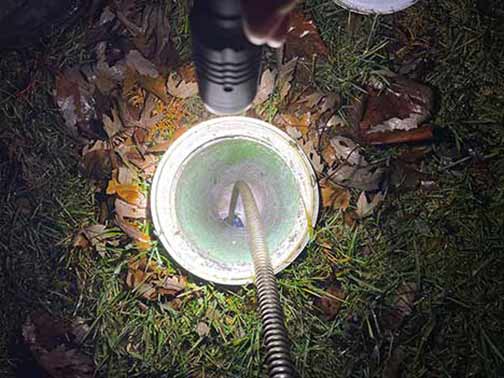
The sewer line is the workhorse of your home’s plumbing system, says Lyon Property Management experts. Every drop of water that flows into your toilet, sink, shower, and appliance drain finds its way into the sewer lines. Every day, the sewer line handles several gallons of brown and black water from your home.
Water, regardless of where it comes from, often contains solid and semi-solid particles. These include human waste, food particles, human/pet hair, and soap, to name a few. As the water flows through the sewer line, some debris is left inside the pipes.
Over time, days, weeks, and months of debris gradually build up inside the line. At first, this only slows the water flow through the pipes; then, it begins to narrow the pipe channel. Eventually, if nothing is done to remove the debris, it blocks the sewer line.
That is how your sewer line becomes clogged. Of course, a sewer line can also become blocked if a small object (such as a small toy) gets into it or you dump non-biodegradable items in your toilet. The sewer line will also be blocked if the roots of nearby trees or shrubs grow into the pipes.
Is there a way to stop these problems?
Yes, there is. The process described above is why homeowners are advised to clean their sewer lines on a schedule. Cleaning a sewer line at least once a year, even when it is not clogged, is the most effective way to keep wastewater flowing smoothly through the line at all times.
Sewer rodding is the top-recommended way to do this. If you want sustained sewer line health and optimal function, sewer rodding will not only eliminate the debris inside your sewer lines, but it will do it quickly and affordably without damaging the line.
What is sewer rodding?
Sewer rodding is done with plumbing equipment known as a drain or sewer rod. It is a 3 feet-flexible rod. The rods are screwed together end-to-end to make them longer and thus able to access the clogs wherever they are inside your sewer line.
The rod is inserted into the sewer line via an outside cleanout or a floor or toilet drain. Next, the rod is guided to the site of the blockage inside the pipes by the technician. Using twisting, pulling, and pushing motions, the plumber dislodges any clogs inside the sewer line.
Sometimes, the sewer rod is motorized. It is equipped with a mechanical cutting head at the tip of the first rod, and on the other end is a powerful motor. Once the business end of the rod is in place at the location of the clog inside the pipe, the motor is used to spin the cutting head.
This spinning motion drives the cutting head forward through the pipes. Usually, the cutting head is made of stainless steel with sharp teeth that can shear through tree roots and remove other stubborn obstructions from the sewer line. What are the benefits of sewer rodding?
Why sewer rodding is better than other drain-cleaning methods
- It is effective for stubborn clogs
Sludge, grease, soap scum, and limescale inside the sewer line are particularly difficult to remove. However, the powerful mechanical action of sewer rodding allows it to clear these blockages easily.
- Flexibility and deeper reach
Complex pipe systems are not a problem because the sewer rods can bend and flex to navigate the curves and bend in the sewer line. They can reach further into the line than other drain-cleaning methods.
- Minimal risk of pipe damage
Sewer rodding is a safer method than using chemical drain cleaners, for instance. As long as you use a professional plumber who can inspect the sewer line to assess the condition of the pipes, your drain is safe.
- Not invasive or disruptive
Because sewer rodding does not involve digging, there is no risk of damage to your landscaping or surrounding structures. The level of disruption to your day-to-day household activities is almost nonexistent.
- Fast and affordable
Unlike traditional drain-cleaning methods, sewer rodding doesn’t take time. The entire process can be completed in a few hours. Moreover, it costs a fraction of what other methods cost; you save money and time.
- It is versatile
Sewer rodding can be used for a wide range of drain types and all kinds of blockages. Depending on the size and condition of the pipes, the rods, and cutting head can be swapped out for whatever will be more effective.
- Suitable for preventive maintenance
The best thing about sewer rodding is that it is a great tool for preventive maintenance. Rodding your sewer line every 6 months to one year is one of the best ways to keep the system working efficiently.
Does your sewer line need sewer rodding?
Every sewer line needs sewer rodding. Some people wait until their sewer line is blocked to realize they need sewer rodding. Smart homeowners, on the other hand, know they can use sewer rodding to prevent nasty clogs and blockages in their sewer line.


